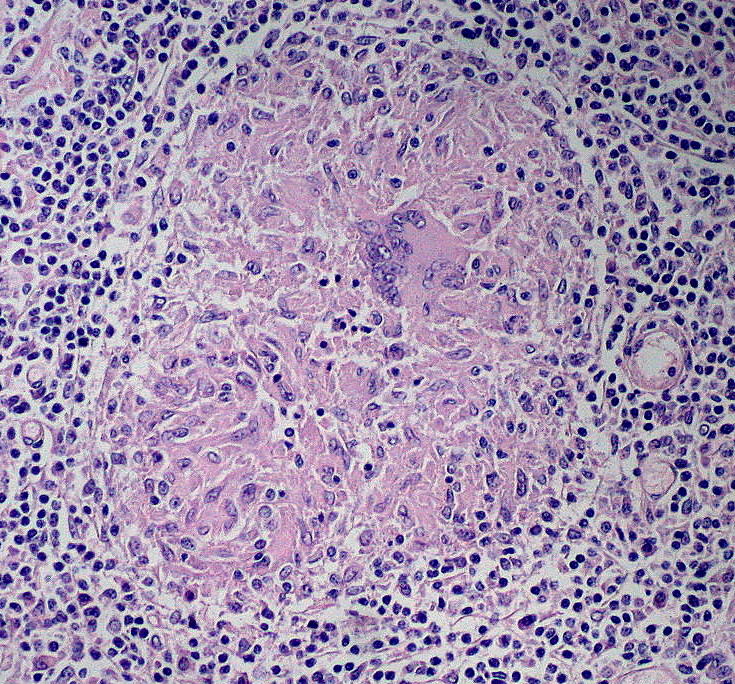Playlist
Show Playlist
Hide Playlist
Pediatric Inflammatory Bowel Disease (IBD): Basics
-
Slides Inflammatory Bowel Disease.pdf
-
Download Lecture Overview
00:02 In this lecture, we’re going to review the basics of inflammatory bowel disease. 00:07 Whole books have been written about this, but we’re going to try to cover the features that are most likely to show up on a multiple choice exam. 00:14 So inflammatory bowel disease, a few things we need to understand. 00:19 The incidence is increasing in the United States. 00:22 This is probably because fewer and fewer children are exposed to things that are training their immune system in that first year of life not to attack itself. 00:34 25% of patients are going to present in childhood or adolescence. 00:38 So this is somewhat an adult disease, but also it’s a pediatric disease and there some differences. 00:46 Environmental triggers in genetically predisposed individuals are what caused this disease. 00:53 It’s a combination of environment and genetics. 00:56 Clearly, poor health, restricted growth, and adverse psychological well-being are consequence of inflammatory bowel disease. 01:05 This is a disease where we have to deal not only with the intestine, but the person as a whole. 01:12 So what part of the bowel are affected? Well, it’s different depending on which type of inflammatory bowel disease you have, be it Crohn’s or ulcerative colitis. 01:22 Crohn’s disease can affect any part of the GI tract from mouth to anus. 01:29 Ulcerative colitis only affects the colon. 01:34 So the epidemiology of IBD is that there is a bimodal peak of when this disease is first recognized. 01:41 With an uptake during the late childhood period and then into young adulthood and then fewer diagnoses until the 40s, 50s and 60s. 01:54 While it is rare, I have even seen children diagnosed with inflammatory bowel disease as early as year of age. 02:02 But these are the peak ranges when this diagnosis is made and because I’m speaking about pediatrics, I’m going to talk about the younger group. 02:11 Remember that the mean age of diagnosis in the United States is in children, so it’s appropriate for us to be discussing this problem. 02:18 The average age being 12-1/2. 02:21 And 20% of cases in children are diagnosed before 10 years of age. 02:27 So we have to think about this even in the young kids. 02:30 So who’s affected more often? Well, in ulcerative colitis, it’s more often affected men than it affects women. 02:39 Inflammatory bowel disease is more prevalent in the first world. 02:44 Developing countries have a lower rate of this problem. 02:47 This probably relates to early childhood exposure to infections and especially to worm infections which seem to be protective for developing the illness. 02:58 So risk factors for inflammatory bowel disease include a positive family history, which is seen in roughly one in four patients. 03:07 Patients with Jewish ancestry are at increased risk for developing inflammatory bowel disease. 03:13 Patients who are exposed to smoke have an increased risk of development of Crohn’s disease. 03:19 But ironically, smoke exposure decreases risk of developing ulcerative colitis. 03:25 I would not propose that you encourage patients to smoke because of a decreased risk of ulcerative colitis, but that is something we’ve seen. 03:32 Interestingly, appendectomy may be protective for the development of Crohn’s disease. 03:37 Nobody has a clue why. 03:40 So inflammatory bowel disease is going to present a little bit differently depending on whether the disease is Crohn’s disease or ulcerative colitis. 03:49 However, there are some consistencies between the two. 03:52 All of these patients will present with abdominal pain, weight loss, and intermittent fevers. 03:58 Patients with Crohn’s disease will have diffuse or right lower quadrant crampy abdominal pain. 04:04 They may have non-bloody, melanotic or frank blood in their diarrhea. 04:09 They will see more perianal disease, so you’ll see tags, fissures, other problems, fistulas around the anal area. 04:21 So a perianal exam is important on these patients. 04:24 And they also can develop recurrent aphthous ulcers in the mouth. 04:28 Patients with ulcerative colitis will develop diffuse abdominal pain. 04:34 They may develop bloody diarrhea and they may also develop fecal urgency and increased frequency.
About the Lecture
The lecture Pediatric Inflammatory Bowel Disease (IBD): Basics by Brian Alverson, MD is from the course Pediatric Gastroenterology.
Included Quiz Questions
Which statement about IBD is true?
- Smoke exposure increases the risk for Crohn’s disease
- Incidence in the US is decreasing due to better treatment options
- The majority of patients present in childhood
- It is generally a cause of painless GI bleed
- Smoke exposure increases risk for ulcerative colitis
Which of the following findings is more common in Crohn's disease than ulcerative colitis?
- Perianal disease and recurrent aphthous ulcer
- Diarrhea with bloody stool
- Crampy abdominal pain
- Risk of colon cancer as a long term sequel
- Weight loss
What percentage of patients with IBD present before adulthood?
- 25%
- 100%
- 60%
- 50%
- 30%
Customer reviews
5,0 of 5 stars
| 5 Stars |
|
1 |
| 4 Stars |
|
0 |
| 3 Stars |
|
0 |
| 2 Stars |
|
0 |
| 1 Star |
|
0 |
Excellent lecture, it is sometimes difficult to remember and differentiate one another. Here, a lot of care has been made to help us to differentiate CD and UC. It shows.





